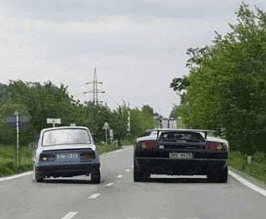
The Australian today has published analysis from Deloitte Access Economics’ Chris Richardson arguing that the major differences in growth rates between the mining and non-mining states are going to shrink significantly in 2013-14:
Noting that the growth rate in Western Australia will drop from 5 per cent to about 3.3 per cent in 2013-14, Dr Richardson describes WA as “a state where growth is slowing fast, and one with a slate of problems ahead”.
Overall, he predicts the output growth rate for Australia to drop from about 2.4 to 2.2 per cent in 2013-4 compared with last year.
He says the drop in new projects, or what he calls the “construction cliff”, is a serious concern, although “most importantly for WA, export volumes will leap in coming years”…
“Yes, recession is possible in WA and Queensland but that’s not what we forecast: we see weakness, but it would take much worse news on commodity prices to signal recession — coal and iron ore prices would need to fall a lot more for that to happen”…
He says the gap is not closing because of any dramatic improvement in performance in the non-resource states, so much as a slowdown in states such as WA.
Indeed, a quick examination of the March quarter national accounts already reveals a dramatic slowdown in growth, as measured by state final demand (a proxy measure for gross state product that does not include trade).
While growth in the key mining strongholds had been spectacular, with final demand growing at around twice the pace of the non-mining states over the past decade:
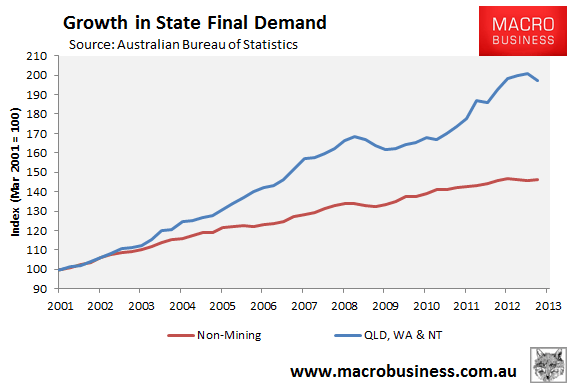
It turned sharply negative in the March quarter, falling by 1.7%:
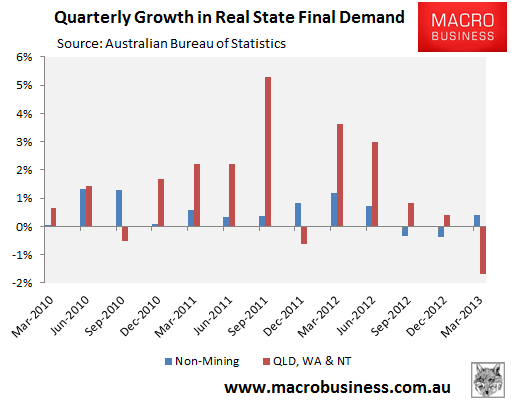
The mining stronghold of Western Australia is an interesting case in point. While Dr Richardson does not believe that the state will fall into recession, the key macro economic data is already showing material weakness. State final demand has already fallen for two consecutive quarters in Western Australia – down -0.9% and -3.9% respectively:
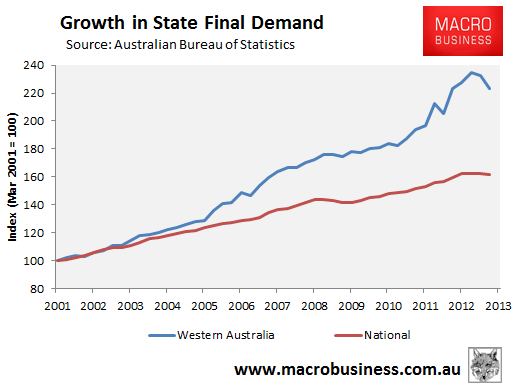
More importantly, the Western Australian labour market is weakening, as evident by annual full-time jobs growth slowing to a crawl, aggregate hours worked turning negative, and the unemployment rate rising by 1.2% over the past year:
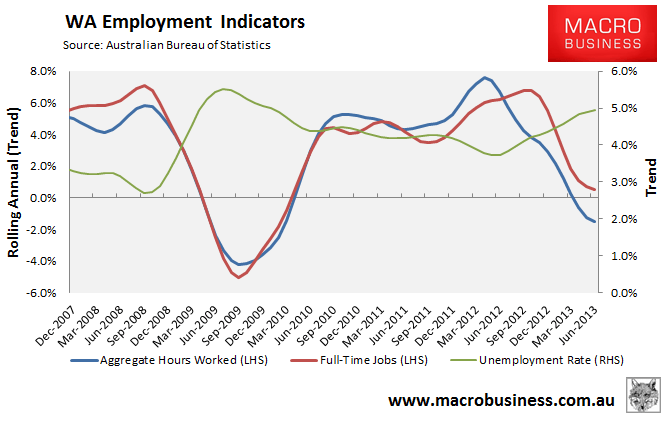
While it is too early to declare that Western Australian is in recession, with mining-related capital expenditures (capex) now in decline – falling from a peak of 31% of state final demand in June 2012 to 26.2% of final demand in the March quarter – risks are clearly to the downside.
And even if export volumes can grow by enough to fill the capex void, it is likely to still feel like a recession oweing to the ongoing slide in commodity prices and the terms-of-trade, as well as the fact that mine production is significantly less labour intensive than mining construction – a point acknowledged by Dr Richardson:
“An export boom, even it keeps the state from a recession, simply doesn’t feel as good to businesses and families as a construction boom does”

